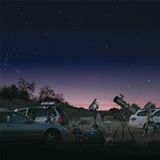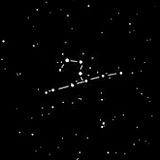
Jump from a fascinating spiral galaxy NGC 7331 in the constellation Pegasus, to a challenging group of five interacting galaxies known as "Stephan's Quintet." Beautiful Pegasus shines in late summer through autumn skies.
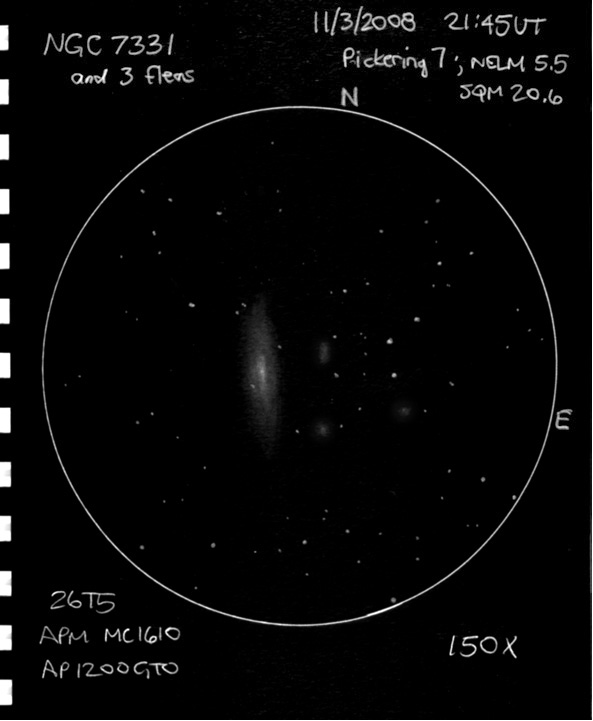
Sketch by Jeff Young
The first step of our galaxy hunt is the fine spiral galaxy NGC 7331, also known as the "Deer Lick Group." It sits 50 million light years distant in the constellation Pegasus, and was first observed by the famous astronomer Sir William Herschel in 1784. At magnitude 10.4, it is bright enough to be glimpsed even in darker suburban skies in a six inch telescope. But in dark skies, the other galaxies nearby can be viewed - the five galaxies that appear to be close to NGC 7331, sometimes referred to as "the fleas," are actually much more distant, appearing nearby only by line-of-sight. Left is a nice sketch by Jeff Young, an experienced observer in Ireland.
The galaxy has a very surprising "retrograde bulge" - its core rotates opposite the direction of the spiral arms! Until recently it was thought to be a twin of the Milky Way. However, new data has cast doubt on that suggestion.
This is one of the brightest galaxies that was not discovered by Charles Messier, and is a great way to dip your toes into the deeper end of what may be seen in the deep sky.
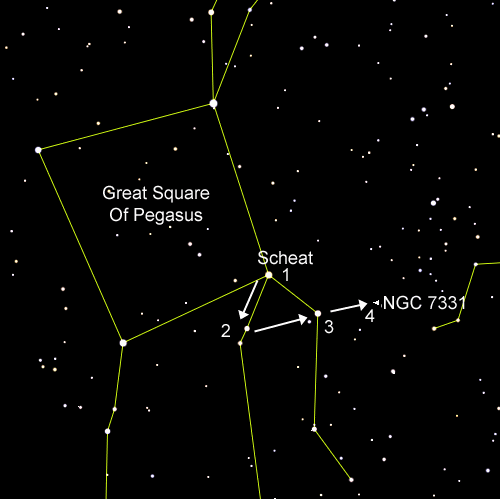
Great Square of Pegasus
When observing this group in your own telescope, look for it as an elongated glow. If you have a larger telescope, you may glimpse more of its extent - its inclined nature relative to us, and start seeing a few of the brighter "fleas."
When I've observed from in town, at our astronomy club's public star party nights, I use NGC 7331 to judge the transparency of the fall sky, and determine what other targets might be visible.
It is an easy star hop: Find the Great Square of Pegasus, locate the corner star Scheat (1), then the wide pair (2), make a triangle with the single star shown (3), and continue half that last distance (4). Scan around in widening circles with a wide field eyepiece, and you should find it as an elongated "smudge". Magnify and bring out more detail.
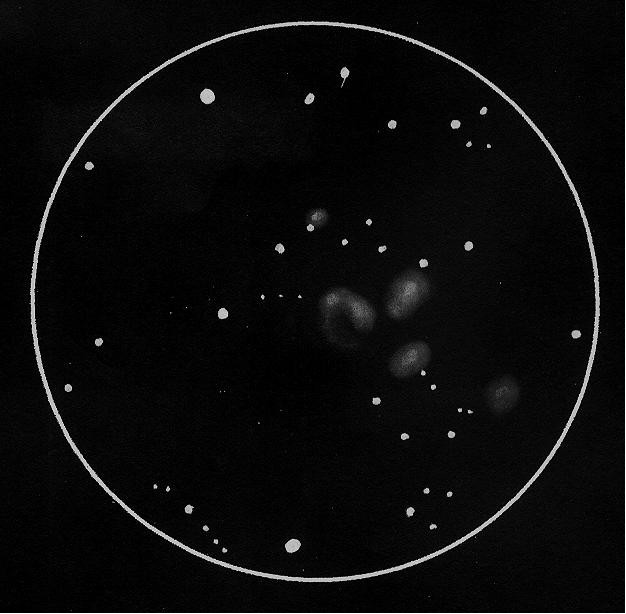
Sketch of Stephan's Quintet by Dale Holt
Stephan's Quintet is a mere 30 arc-seconds, or half a degree (diameter of the Full Moon), away from NGC 7331 to its south-southwest. So you can use the large galaxy as an easy way to find this more challenging group. It is well worth the view if you can get to a dark enough sky with enough telescope to make this fine grouping of five interacting galaxies appear.
Discovered by Édouard Stephan in 1877 at Marseilles Observatory, it is a hotbed of star forming, due to the gravitational disruption caused by their close proximity to each other. This is also a member of the famous Hickson Compact Group Catalog - Hickson 92.
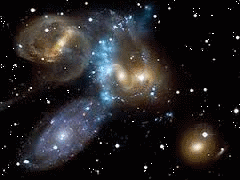
Hubble photo of Stephan's Quintet
The violent collisions of these galaxies (four of the five are physically close) have made them a target of intense scientific study. Here is a Hubble Space Telescope photo showing the interaction.
They are around 39 million light years from us, and although their individual magnitudes are in the 14's, they have been glimpsed in as small as an 8" telescope. You will need to use high power to see the individual galaxies, since they are all within a tight 4 arc-minute grouping.
Up for the challenge? Let us know if you can see Stephan's Quintent. Leave a comment in the "review" section of this article. Be sure to mention what kind of telescope you used, and the location you saw it from. Good luck!
Charts created with Starry Night Pro.
Mark Wagner is a life-long astronomy enthusiast and deep sky observer. He has spent the past twenty years popularizing amateur astronomy in the San Francisco bay area through his writing and community building. A past president of the San Jose Astronomical Association, he founded what is now the annual Golden State Star Party in California. Please post if you have comments, questions, sketches or images you've taken of the targets mentioned above.






